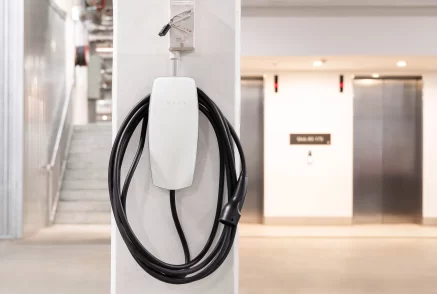Step 1: Build a Reliable Asset RegisterAn asset register is your building’s single point of reference for all the physical assets that exist under that roof. Plant equipment, machinery, infrastructure—these are all listed here so you have a clear picture of what needs to be managed and maintained, helping to ensure nothing critical is forgotten or neglected. Best practice is to assign those who physically maintain the assets—the electricians, HVAC techs, plumbers, fire contractors—to document the assets in their relevant fields, which can then be compiled into one comprehensive register by the facilities team. If an asset isn’t documented, it doesn’t get maintained, so the importance of an asset register cannot be understated.
Step 2: Set Up a Preventative Maintenance PlanOnce you know what’s in the building, the next step is making sure everything gets serviced at the right intervals—and by the right trades. Most service requirements are already defined in Australian Standards. For example, a safety switch (RCBO) needs to be tested a certain number of times per year. So, you take the asset register, match each item to the relevant standard, and build a servicing schedule. That schedule becomes the backbone of your preventative maintenance plan. Once you’ve built the plan, you can tender it out. The key is to first establish what needs to be serviced and how often, then create a detailed scope of work. That scope goes out to at least three contractors. That way, everyone’s quoting on the same thing—so you’re essentially comparing “apples with apples”.
Step 3: Align with Your Sinking Fund ForecastYour admin fund is in place for capital expenses and routine maintenance from which levies are structured accordingly. Your sinking fund is for the big stuff—like replacing lifts, fire panels, or air conditioning systems which have an estimated shelf life. If you want your asset to get to its prescribed end of life—say 20 years—you need to make sure that you’re servicing it accordingly. Your preventative maintenance plan and sinking fund forecast work hand in hand—the maintenance plan keeps assets running well and compliant, and the sinking fund ensures the owners corporation is putting away enough money each year to replace them when the time comes. It’s important to note, for new developments: being within in the defect liability period doesn’t mean you can skip servicing. Builders and developers can (and often do) deny defect claims if there’s no record of the owners corporation applying regular maintenance.
Final Thought:Preventative maintenance extends the life of the asset, reduces risk of unexpected breakdowns, and helps you plan repairs at convenient times, rather than dealing with sudden emergencies. For example, in Canberra, no one wants to have a cold shower in Winter. If you have a plumber in place doing planned preventative maintenance, they can catch a hot water unit failure before it fails. It’s called “preventative” maintenance for a reason. If your building doesn’t have an asset register, preventative maintenance plan, or sinking fund forecast in place, now’s the time to act. Start by looking at your financials, then ensure your levies are set up to fund both short-term servicing and long-term capital works. A lot of this is legislated—especially in the ACT and other states where sinking funds and even preventative maintenance plans are mandatory.
It’s not enough to just have the documents—they need to be checked against what’s on-site and used to guide real-world decisions. That’s what we do as facilities managers: we bring these steps to life. |

Alex Boundy
General Manager - Facilities



